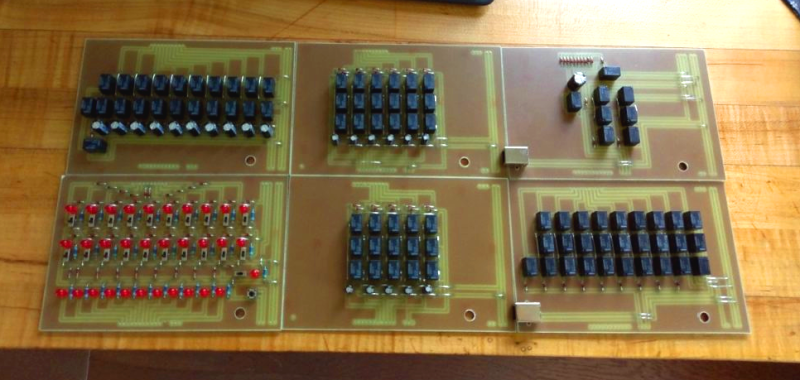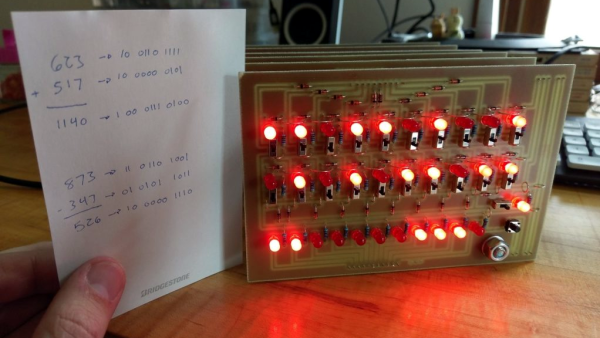When it comes to understanding computers, sometimes it’s best to get a good understanding of the basics. How is data stored? How does the machine process this information? In order to answer these questions a bit more and start learning programming, [Nakazoto] built a 10-bit binary adder with relays.
The build is designed from the ground up, including the PCBs, which are milled using a CNC machine. There are six boards: the input board, sequencer board, 2 sum register boards, a carry register board and a 1-bit ALU board. The input board has 32 LEDs on it along with the switches to turn on each bit on or off. In total, 96 relays are used and you can hear them clacking on and off in the videos on the page. Finally, there is a separate switch that sets the adder into subtraction mode.

Usually, [Nakazoto]’s website is mostly about cars, but this is a nice diversion. The article has a lot of detail about both the design and build as well as the theory behind the adder. Other articles on binary adders on the site include this one which uses bigger relays, and this 2-bit adder which uses 555 timers.












